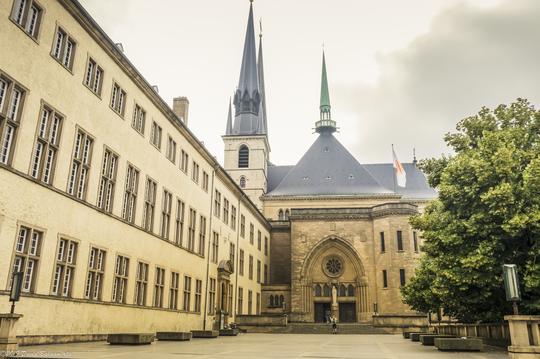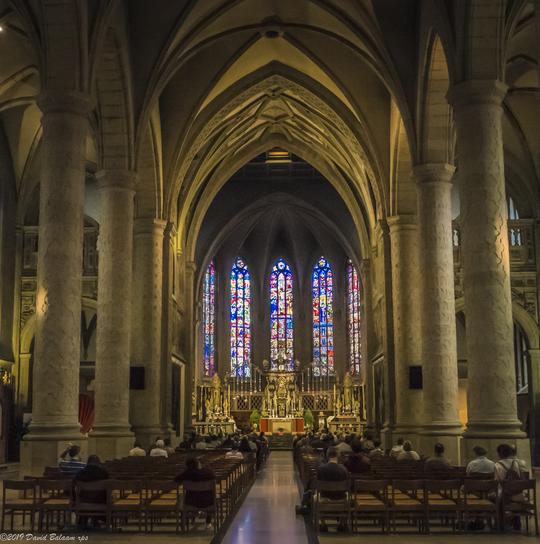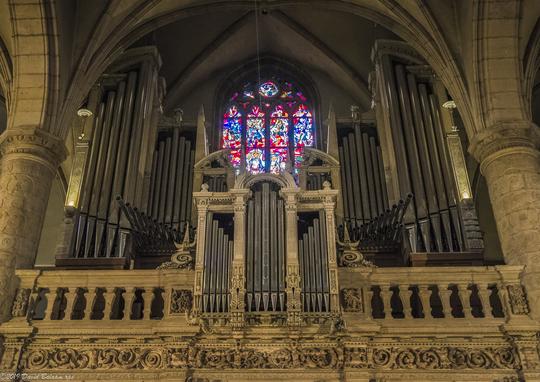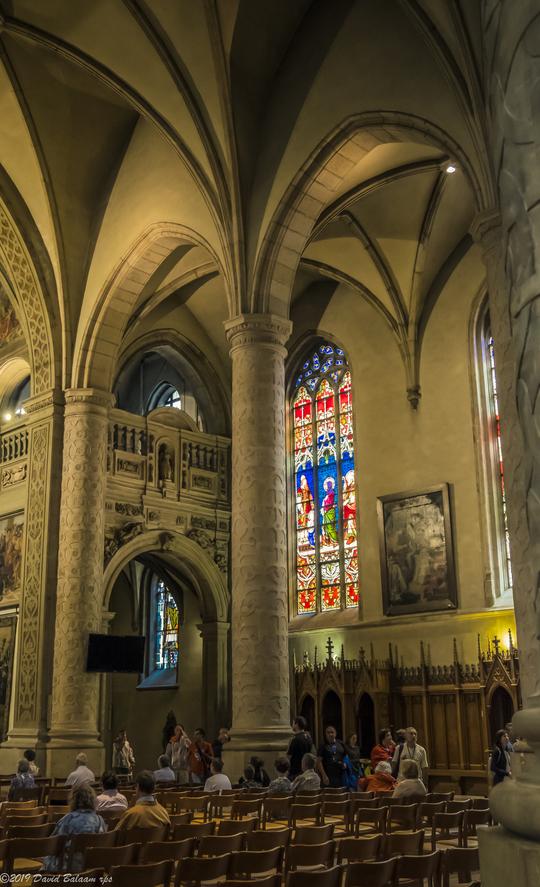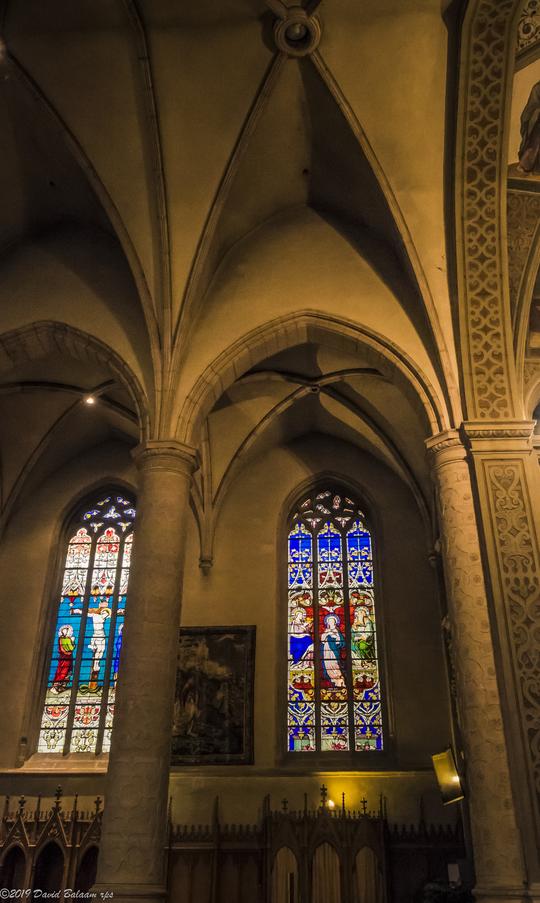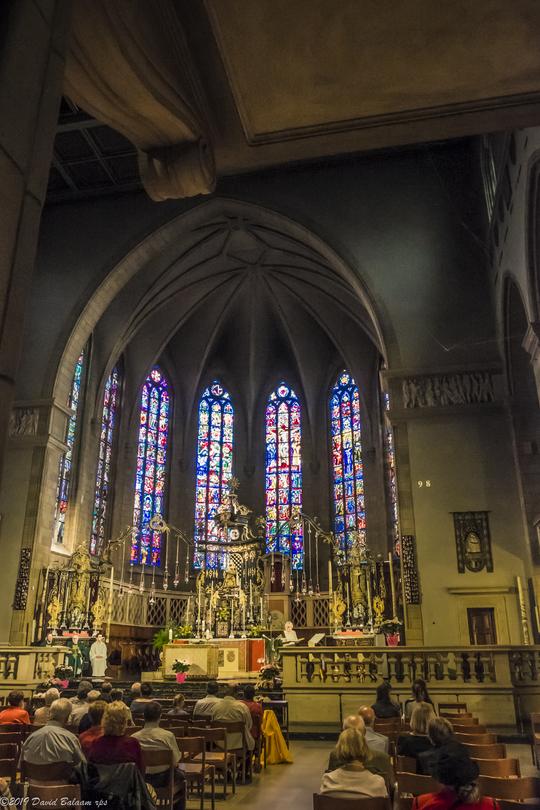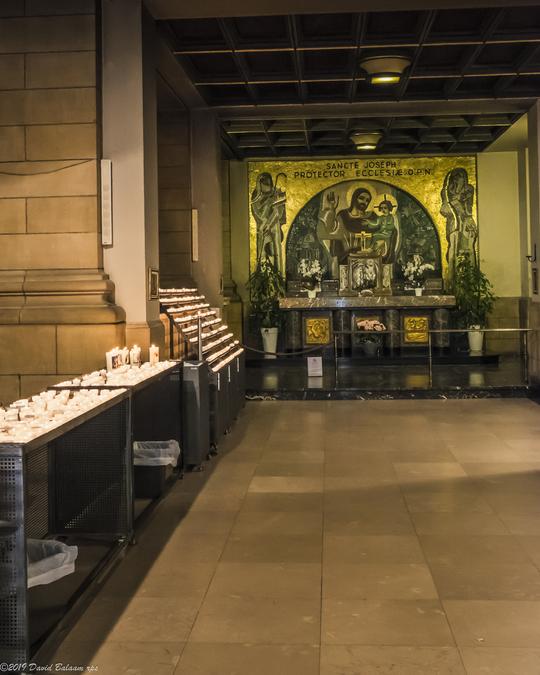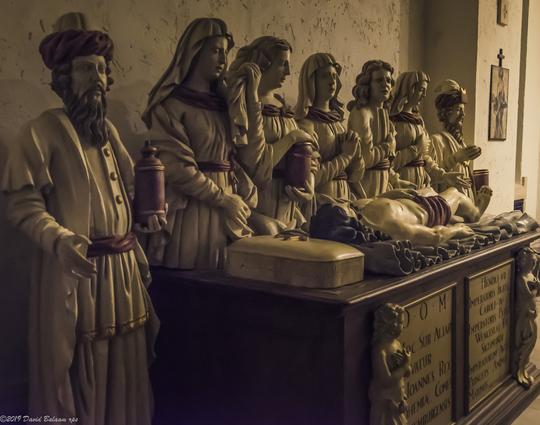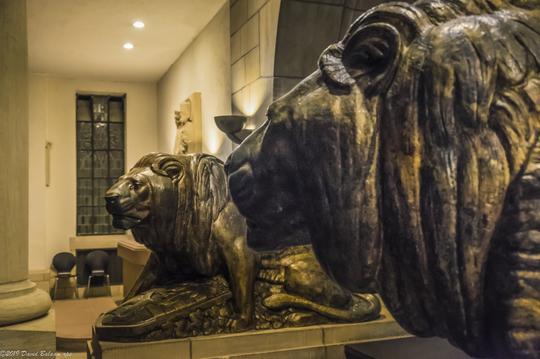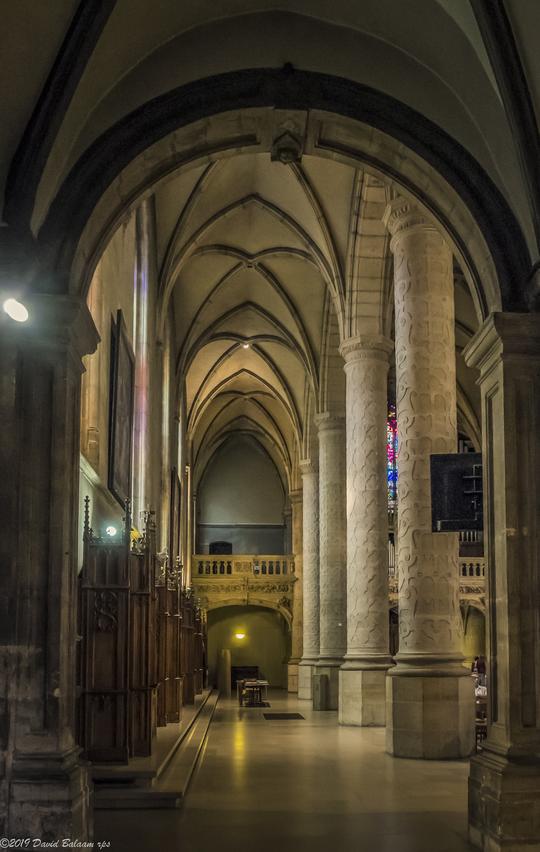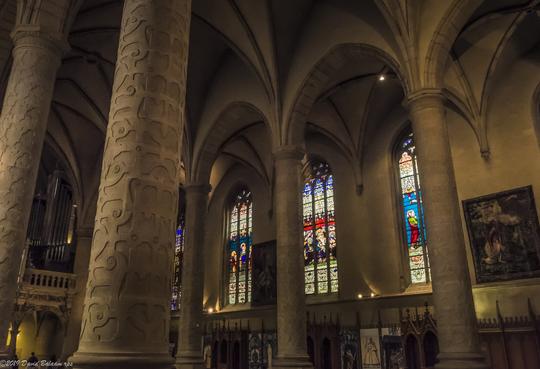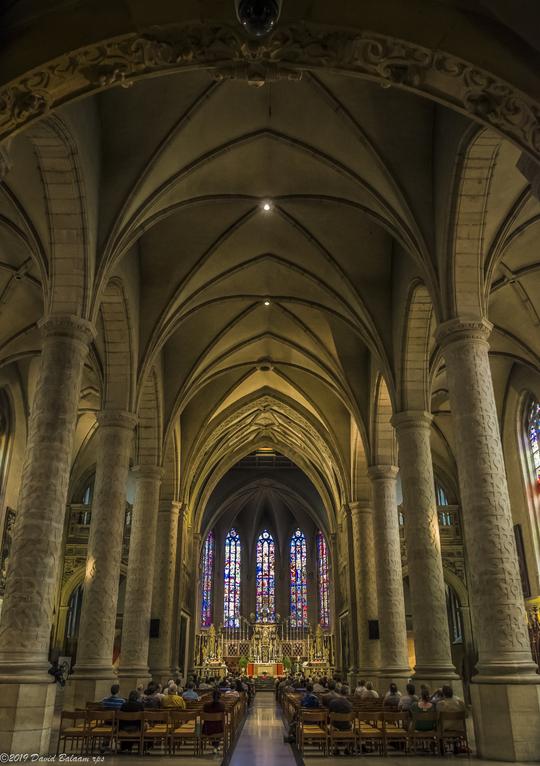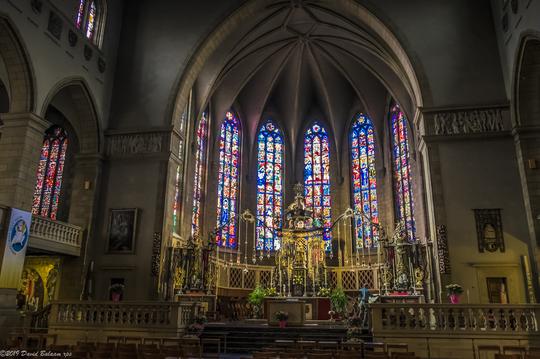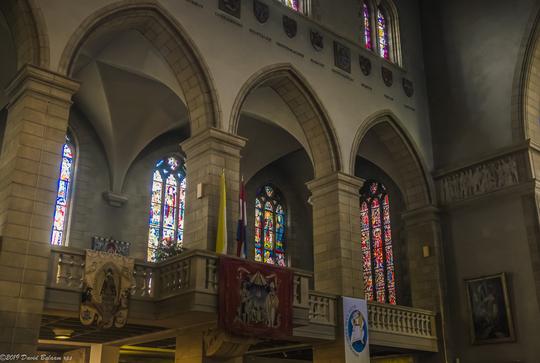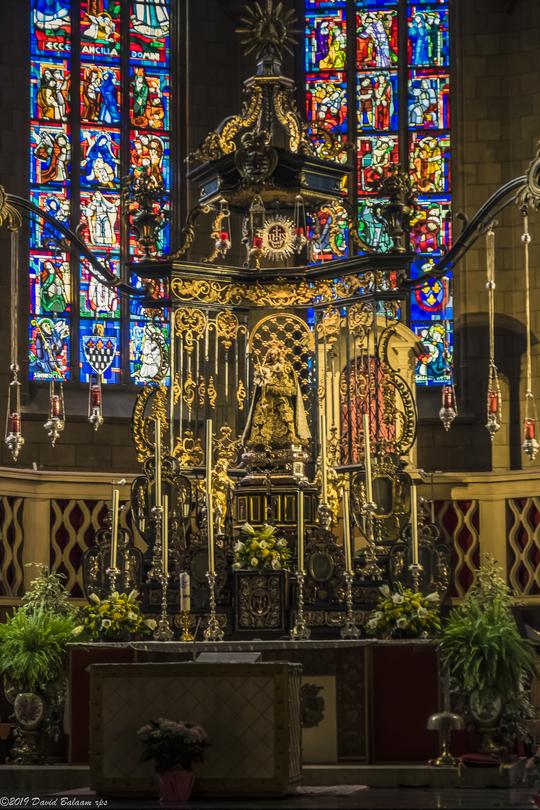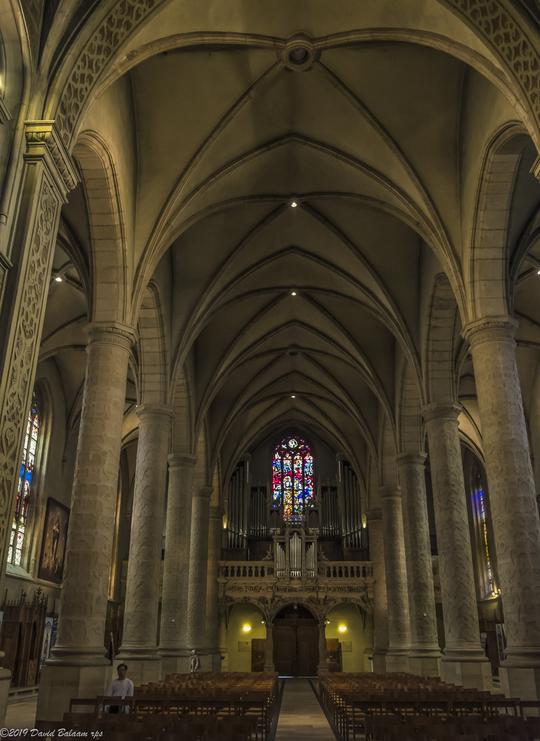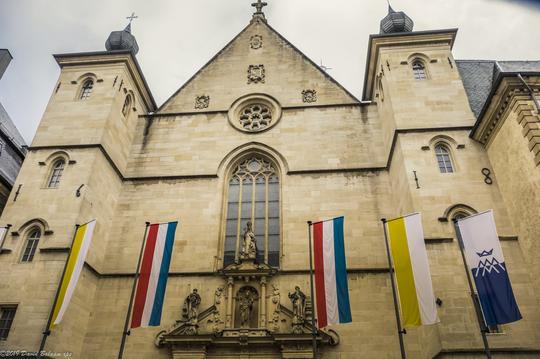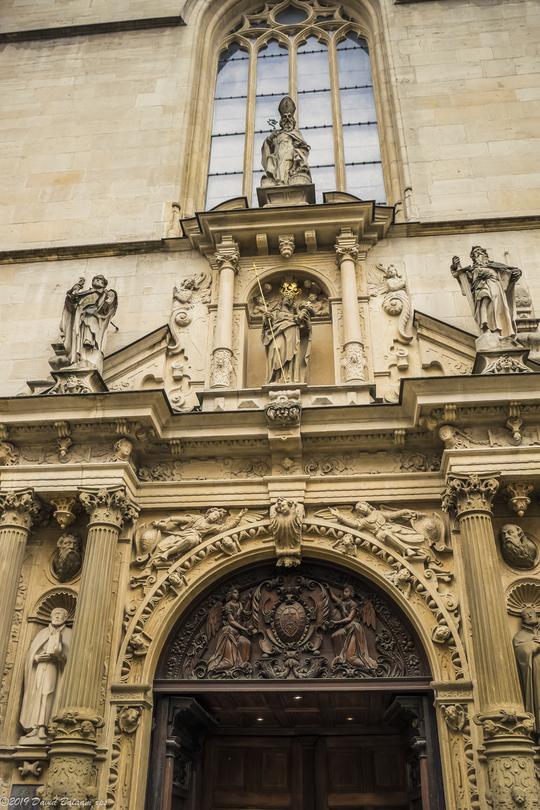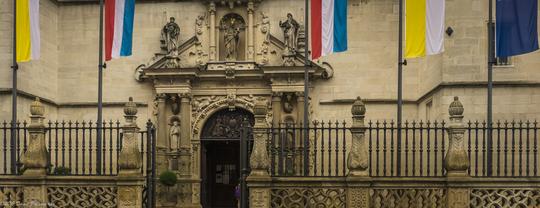Notre Dame Cathedral, Luxembourg
The church is a noteworthy example of late gothic architecture; however, it also has many Renaissance elements and adornments. At the end of the 18th century, the church received the miraculous image of the Maria Consolatrix Afflictorum, the patron saint of both the city and the nation. Around 50 years later, the church was consecrated as the Church of Our Lady and in 1870, it was elevated by Pope Pius IX to the Cathedral of Notre-Dame. At the cemetery of the cathedral is the National Monument to the Resistance and to the Deportation. The centerpiece of the monument is the famous bronze monument by the 20th century Luxembourgish sculptor Lucien Wercollier called The Political Prisoner. The cathedral was expanded and enlarged from 1935 to 1938. Jesuits from Belgium, which like Luxembourg belonged to the Spanish Netherlands at the time, opened a college in Luxembourg city in 1603, where the majority of young Luxembourgers were taught until 1773. The first stone of the church was laid on 7 May 1613, under Father François Aldenard. The constructor of the building was Ulrich Job, from Lucerne. Under him, the decoration of the columns also took place. The Jesuit church was consecrated and dedicated to the Immaculate Conception on 17 October 1621 by auxiliary bishop Georg von Helfenstein. Artistically, it was above all the German sculptor Daniel Muller (d. 1623) from Freiberg (Saxony) who contributed to the appearance of the church, his work including the organ tribune. The decorations in alabaster, a favourite material of Dutch Renaissance sculptors, represent early Baroque angels, who play music between leaves and floral decorations. After the Jesuits had left the city in 1773, Empress Maria Theresa of Austria gifted the church to the City of Luxembourg in 1778, and it became the new parish church under the name "Saint Nicolas et Sainte Thérèse". This was convenient, as at the time the old parish church, the church of St. Nicholas on the Krautmaart was small and decrepit, and was demolished in 1779. For this reason, a statue of St. Nicholas stands over the Cathedral entrance in Rue Notre-Dame. It received the name "Notre-Dame" on 31 March 1848 under the apostolic vicar Jean-Théodore Laurent. His successor, Nicolas Adames, had the Baroque interior refurbished from 1854 in a neo-Gothic style. When Luxembourg was elevated to a bishopric by Pope Pius IX on 27 June 1870, the Notre-Dame Church became Notre-Dame Cathedral.
https://en.wikipedia.org/wiki/Notre-Dame_Cathedral,_Luxembourg
